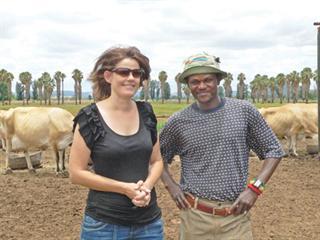This question arises most often in spring when there is risk of late frost impacting on newly emerged seedlings in the field.
There are several factors which the farmer needs to address first:
Frost – is there a risk of newly emerged seedlings being affected by frost? It takes very little frost to dispose of young cucurbits. The seedlings would have to be grown under protection and plastic may not be enough. They may require the additional protection of frost cover blankets. These make a huge difference.
Timing – seedlings should be timed so that they will be ready when the perceived danger of frost is past. you plant the seed trays too early, plants which have become too advanced will have a slow, erratic start, while seeds planted later will easily catch up.
A good stage to pull the seedlings is when the true leaves start to form, because by this stage they will have enough roots to hold onto the growing medium. This is often two weeks from planting but depends on the temperature of the seedling house.
Seedlings develop leaves rapidly, but if there’s too much leaf compared to the soil medium, the plants will easily wilt even when the soil is fairly moist. It’s only when they produce enough roots that things change.
By then the stress could easily harden the plant and cause a big delay before it gets motivated again.
Seed cost – when we can’t be sure of being able to provide 100% optimum conditions for emergence, it pays to rather go for seedlings instead of expensive seeds. When we plant expensive seed, we tend to stretch out the plant population to the maximum so that we can still get a full yield. In such circumstances, any gaps through dead seeds or otherwise poor emergence will cause a corresponding loss of yield, making seedlings a good option.
Getting an early start – if planting by hand, you can pre-germinate the seeds. Put them in a container of lukewarm water overnight. Add 20g of sodium molybdate per 5â„“ if there’s any chance of a deficiency in the field. If you’re not sure, apply anyway. The next morning, drain the water and put the seeds between moist newspaper on a sheet of corrugated cardboard.
Put a plastic sheet over the seeds and an electric blanket over this. Switch on to the first setting and put a bag over the electric blanket for insulation. The seeds will be ready for planting into moist ground the next morning. – Bill Kerr ((016) 366 0616 or e-mail [email protected]). |fw









